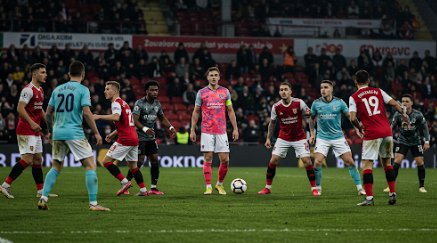Tactical evolution, data-heavy management, and the rise of inverted wingers
The “Number 10” — the classic playmaker who roams between midfield and attack — once symbolized artistry, flair, and freedom on the football pitch. From Diego Maradona to Zinedine Zidane, and more recently Mesut Özil or David Silva, these creative maestros were the heartbeat of their teams. But in today’s fast-paced, data-driven, and tactically rigid game, the traditional number 10 is increasingly being pushed to the margins — or out of the game entirely.
So what happened to the most romantic role in football? Let’s explore the reasons behind the decline of the classic Number 10.

📉 The Tactical Shift: From Freedom to Function
Modern football places a premium on structure, pressing, and defensive responsibility. Coaches no longer want a player who floats freely, waiting to unlock defenses — they want every player to contribute off the ball.
- Traditional No. 10s typically don’t press effectively, leaving a gap in the midfield press.
- Their defensive output is often considered a liability in high-intensity systems.
- Coaches now favor formations like 4-3-3, 4-2-3-1, or 4-4-2, where the central attacking role is more disciplined and physically demanding.
The era of high-possession, high-pressing teams (think Pep Guardiola’s City or Klopp’s Liverpool) leaves little room for a free-roaming artist.
📊 Data-Driven Management and Positional Play
The rise of data analytics in football has changed how players are evaluated. Teams now track:
- Pressing intensity
- Ball recoveries
- Heat maps
- Pass completion in “zones”
Unfortunately, the traditional Number 10 doesn’t score high in most of these metrics. While they may provide magical moments, they often lack the measurable output that modern coaches crave.
Additionally, positional play (or “Juego de Posición”), a system popularized by Guardiola, requires every player to occupy very specific zones. A roaming 10 disrupts this model.
🚀 The Rise of Inverted Wingers and Inside Forwards
One of the biggest tactical evolutions of the past decade is the rise of inverted wingers — right-footed players on the left and vice versa.
- These players cut inside into central areas, effectively occupying the same space the number 10 used to control.
- With inside forwards like Mohamed Salah, Vinícius Jr., or Bukayo Saka, attacks are now built from wide areas inward, making a central 10 redundant.
In today’s systems, creativity is no longer centralized — it’s spread across multiple zones, especially from wide positions.
🧱 Double Pivots and Defensive Midfields
Many teams now deploy a double pivot (two defensive or central midfielders) in formations like 4-2-3-1 or 4-4-2. This clogs the central area, making it harder for a 10 to operate in pockets of space.
As a result:
- Traditional 10s are either marked out of the game or forced to drop deeper.
- Coaches instead deploy a more box-to-box number 8, like Kevin De Bruyne or Jude Bellingham, who can attack but also defend.
🔁 Adaptation or Extinction: Where Do the 10s Go?
Rather than disappearing, many traditional 10s have had to evolve or shift their roles:
- Deeper Playmaker (Regista): Players like Luka Modrić or Marco Verratti drop deeper and dictate play from behind.
- False 9: Some 10s move further forward to become withdrawn strikers (e.g., Lionel Messi in his Barcelona prime).
- Wide Playmakers: Creative players are shifted to wide positions to exploit space and cut in centrally (e.g., Bernardo Silva, Jack Grealish).
Those who can’t adapt — like Mesut Özil in his later Arsenal years — often find themselves sidelined.
⚽ Is the 10 Role Truly Dead?
Not entirely. There are still systems and coaches that use a central creator:
- Julian Nagelsmann and Luciano Spalletti have recently used hybrid 10s in flexible midfields.
- Teams like Atalanta, RB Leipzig, and Bayer Leverkusen have flirted with systems that accommodate creative 10s in narrow attacking triangles.
- In international football, where pressing is less intense, the number 10 role still sees light (e.g., James Rodríguez for Colombia).
However, these are exceptions — not the norm.
🧠 Conclusion: A Role Reborn, Not Dead
The traditional Number 10 — as a luxury player with minimal defensive duties — is undoubtedly in decline. Modern football’s obsession with intensity, pressing, and structure has marginalized this iconic role. But the essence of the 10 lives on, reborn in players who blend creativity with work rate, movement, and tactical discipline.
Today’s playmakers are expected to run, press, and track back just as much as they are expected to unlock defenses. The artist must now also be an athlete.
To learn about Football Tactics and modern strategies click on the highlighted text.
❓ FAQs – The Decline of the Number 10 Role in Football
Q1: Why is the number 10 role disappearing in modern football?
A: The role is fading due to tactical systems that prioritize pressing, structure, and defensive contribution. Coaches now prefer more dynamic and versatile midfielders over free-roaming playmakers.
Q2: Are there any players who still play as a traditional number 10?
A: A few players still operate in that role, such as Paulo Dybala or Martin Ødegaard, but they are increasingly rare and often must adapt their style to survive.
Q3: How do inverted wingers affect the number 10 position?
A: Inverted wingers cut inside into central spaces, which were once the primary zone of the number 10. This tactical overlap reduces the need for a separate central playmaker.
Q4: Can a number 10 still exist in today’s football?
A: Yes, but only if they adapt — by contributing defensively, increasing work rate, or shifting into different roles such as deeper midfielders, wide playmakers, or false nines.
Q5: Is the role completely dead or just evolved?
A: The role hasn’t died but evolved. The pure number 10 is rare, but its creative function lives on in modern hybrid roles like attacking 8s or inverted wingers.
